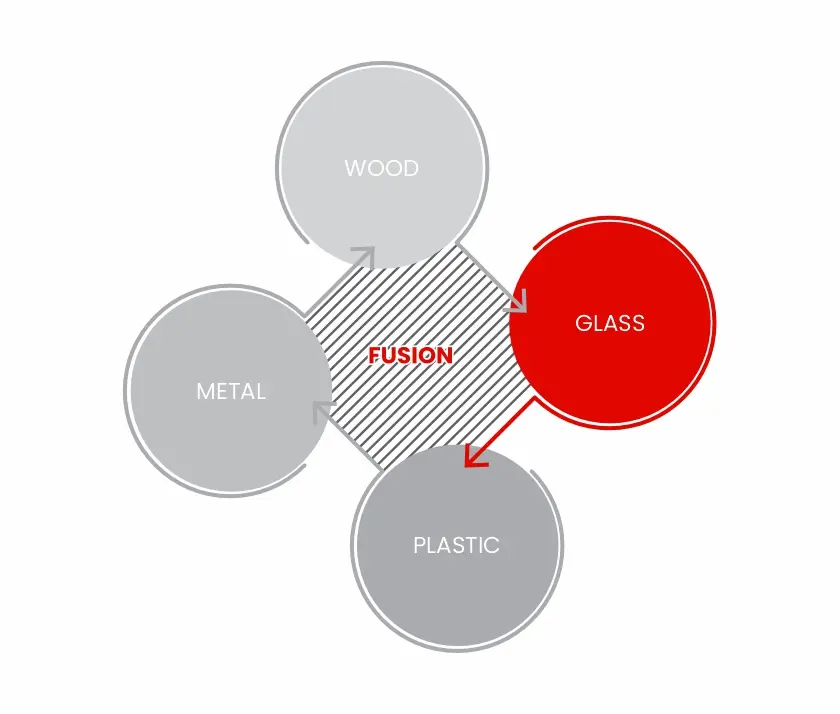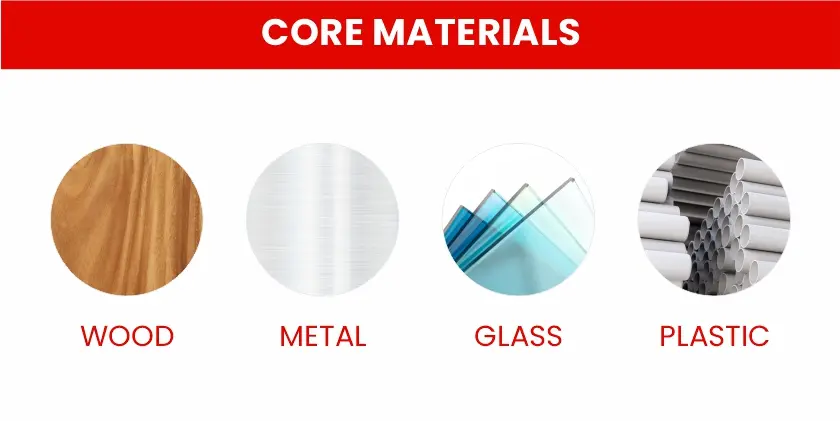Sustainable Material And Fabrication Suppliers
Architectural materials: Architectural materials cover a vast number of areas, from construction to decorative interiors and soft finishes.
Sustainable materials: Our concepts included all significant and radical developments to change the materials and the processes. We elevate these recycled or renewable materials to a premium level with clever design and honest communication.
Luxury materials: Durability and innovation in colour and finishing are embraced as a way of differentiating from the mass market. Our customisation creates a new form of personalised luxury.
CMF understanding: We decide the functional and emotional perceived value of a product and space. It gives vast options for different class segments of the same design.
Material
Both traditional and new-age technologies are playing a role in the material and fabrication industry. For years scientific advancements have made brick-and-mortar stores stronger(sustainable) and professional(look). Like the brands are more concerned about experiential marketing, D’Art’s expertise in material and fabrications is committed to them in many ways(just check our services). Our understanding of the intellect of material knowledge is at par.
OUR PERCEPTION:
For materials, we witness three ways, as listed and pictographs below:
AGE 1
All these four core materials are placed on top of the hierarchy chart where all other products(either fused) are branched. | AGE 2
The pictograph visualizes the simple demonstration of fusion of all these core materials with other materials. The wood when engineered forms fiberboards with different densities(high, medium, low). Also, exploded wood fibers are highly compressed and the perforated hardboards are widely used to place store fixtures. The metal when fused with two or more elements forms alloys. Eg. Aluminum alloys(1xxx,2xxx,6xxx,7xxx series), copper alloys(arsenical,beryllium,billon,brass,Chinese silver etc.), Iron alloys[steel(carbon,tool,stainless), Iron-chromium, Iron-carbon], etc. Glass is commonly fused with chemical substances like (sodium, calcium)silicate, plastic, colors, wire-mesh(mainly made up of stainless steel) to make different types of glass which are widely used in home interiors, industrial, and commercial spaces, are provided by D’Art, as listed below: |
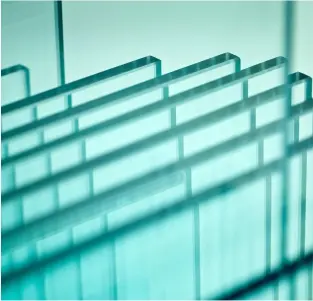 | 1. Float Glass: a. Manufactured from sodium silicate and calcium silicate b. Clear & flat c. 2mm to 20mm thick and weighs 6 to 36 kg/m2 d. Available in different color ranges. e. Used in shop fronts, public spaces, etc. |
2. Shatter-proof Glass: a. Plastic polyvinyl butyral is added to the making process. b. Don’t form sharp-edged pieces when breaks c. Used for windows, skylights, floors, etc. | 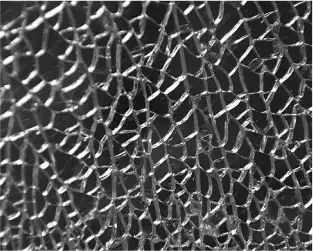 |
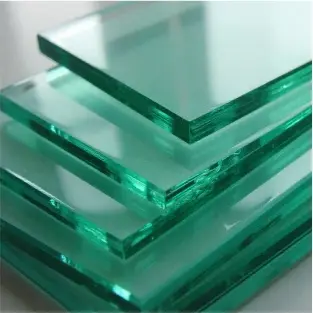 | 3. Laminated Glass: a. Made from two or more layers of ordinary glass which are separated by a bonded interlayer of plastic. b. Should comply with EN ISO 12543 specifications. c. UV reduction d. Energy efficient & Sound insulation e. Strong & Durable |
4. Toughened Glass: a. Made using thermal tempering process. b. Structural Durability c. During toughening, color, clarity, composition & hardness doesn’t change d. Can withstand high temperatures e. Highly resistant to breakages f. Used for shop fronts, window displays, etc. | 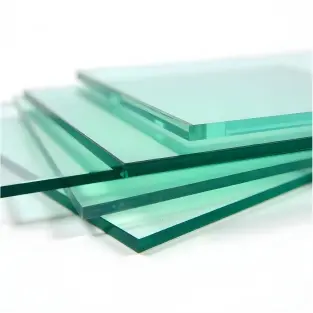 |
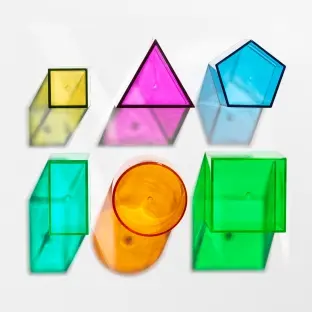 | 5. Tinted Glass: a. To create a tint, color is added to the composition b. Made by altering the chemical formulation of the glass c. UV protection d. Privacy e. Aesthetics f. Climate control |
6. Coated Glass: a. Improves thermal insulation b. Used as double-glazed unit c. Scratch-resistant | 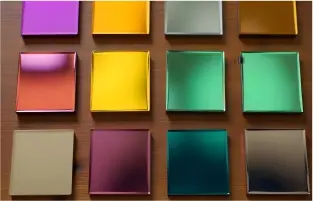 |
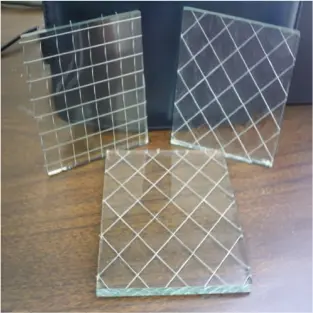 | 7. Wired Glass: a. Wire-mesh is added to the glass b. Provides improved safety c. Fire resistant |
8. Painted Glass: a. Injects style and color b. Painted back-side, protects the glass from scratches | 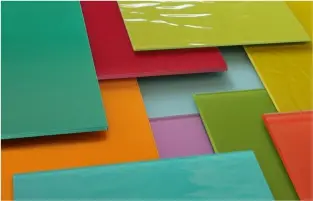 |
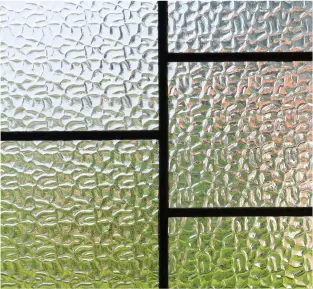 | 9. Obscured Glass: a. Patterned/Fostered glass b. Available in a textured pattern c. Offers privacy |
Plastics are chemical compounds fused with each other to produce different types. PVC(Polyvinyl Chloride) is widely used as the vinyl material, Acrylic[Poly(methyl methacrylate)], composites, polycarbonate, polyethylene, polypropylene, etc. All these fused core materials(with each other) provided by D’Art can be seen in one ecosystem(office spaces) from the entrance to the exit.
AGE 3
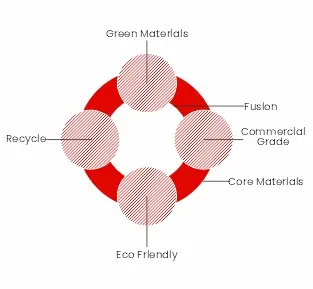 | The new materials branched from the core and the fusion materials, but are nature-friendly and cost-efficient. Broadly classified into two types - commercial grade and green materials. Green materials comprise both recycled materials and eco-friendly materials and are bifurcated under sustainable materials. Recyclable materials that D’Art provides for industrial and commercial constructions are as follows: a. Concrete b. Gypsum c. Plastics d. Paper & Cardboard
|
Eco-friendly materials are as follows:
a. Bamboo & its byproducts
b. Sun-dried Bricks
c. Clay roofing tiles
d. Stone Dust
e. Calcined phosphogypsum wall panels
f. MDF Boards & Mouldings etc.
Commercial-grade materials mostly comprise materials from all the above ages like straw bales, recycled steel, lightweight bricks are used in commercial spaces to make them look both professional and trendy at the same time.
[NOTE] - They are synonymized as branding materials.
Fabrication
Secondly, these core, fusion, and new materials are used while fabrication. Different types of wood fabricators, acrylic fabricators use fabric materials from these ages(listed above) for metal fabrication, wood fabrication, SS fabrication, Sunboard fabrication, and many more.
Our perception of fabrication is three-view pointed, where, in the first, we accustom standard production -
It is simple
Involves vendors with single expertise(S.E.V)
The whole process(from design to production to deployment) is standardized.
The second one is a customized production -
It is more complex in nature than the previous one
It involves multi-expertise vendors(M.E.V)
The whole process(from design to production to deployment) is customized.
Not dramatic, D’Art acclaims itself as ‘King of Fabrication’ where it eyes its production as the fusion of both standard and customized production. For the understanding, in fusion, we either mix up the production styles or the expertise. It adds up to our attributes for the Reason To Believe(RTB) in us.
Explaining our “WHY TO HIRE US!!” The fused architecture lays a foundation with our efficiency of delivering 20,000+ Retail Stores/Year to deploying Injection Moulding, Metal Recycling units across India. Also, we possess the capability of positioning 100 manpower in a day on the Indian map for production & deploying purposes. All of this is possible just because of our great team which consists of both small-scale and high-scale partners who roughly add up to 500+ across the country.
Globally, we have partners in :
United States, Switzerland, Canada, Japan, Germany, Australia, United Kingdom, Sweden, Netherlands, Norway, New Zealand, France, Denmark, Finland, China, Singapore, Italy, Austria, Spain, and South Korea.
Yes, sustainable material and fabrication can enhance product durability. These materials are often designed to be stronger, more resilient, and longer-lasting, reducing the need for replacements.
Yes! We at D'Art Design use eco-friendly materials and fabrication in our retail designs and installations in order to support sustainability and help brands appeal to eco-conscious consumers.
Sustainability influences the selection of materials and process of fabrication to decide on environmentally friendly outcomes. Environmental-conscious decisions are made just because we (as humans) had exploited resources through various inventions and practices.
Green materials are eco-friendly alternatives to the widely used traditional materials. In retail, the use of materials like eco-friendly printing fabric (made up of 100% cotton and recyclable polyester), WPC board (Wood Polymer Composite), bamboo wood products, etc. are gaining consumption in the retail industry.
